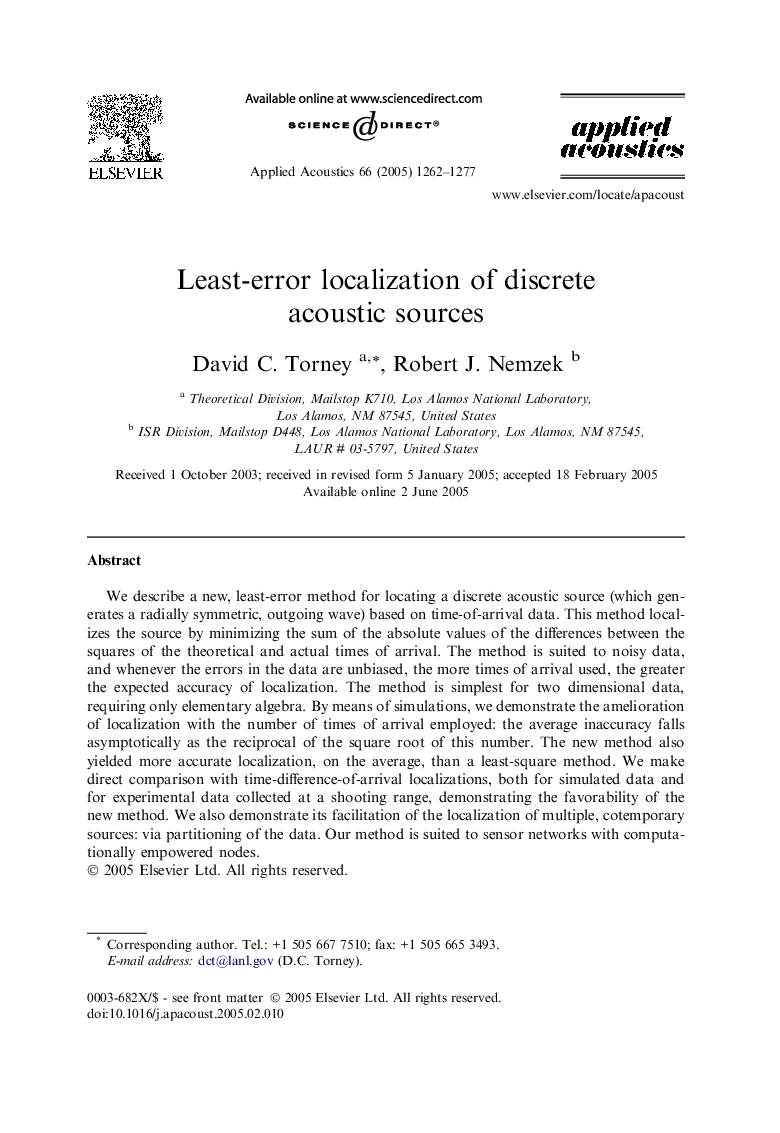| Article ID | Journal | Published Year | Pages | File Type |
|---|---|---|---|---|
| 10413695 | Applied Acoustics | 2005 | 16 Pages |
Abstract
We describe a new, least-error method for locating a discrete acoustic source (which generates a radially symmetric, outgoing wave) based on time-of-arrival data. This method localizes the source by minimizing the sum of the absolute values of the differences between the squares of the theoretical and actual times of arrival. The method is suited to noisy data, and whenever the errors in the data are unbiased, the more times of arrival used, the greater the expected accuracy of localization. The method is simplest for two dimensional data, requiring only elementary algebra. By means of simulations, we demonstrate the amelioration of localization with the number of times of arrival employed: the average inaccuracy falls asymptotically as the reciprocal of the square root of this number. The new method also yielded more accurate localization, on the average, than a least-square method. We make direct comparison with time-difference-of-arrival localizations, both for simulated data and for experimental data collected at a shooting range, demonstrating the favorability of the new method. We also demonstrate its facilitation of the localization of multiple, cotemporary sources: via partitioning of the data. Our method is suited to sensor networks with computationally empowered nodes.
Keywords
Related Topics
Physical Sciences and Engineering
Engineering
Mechanical Engineering
Authors
David C. Torney, Robert J. Nemzek,
